
Here’s to a Wonderful 2022!



As we move into 2022, both buyers and sellers are wondering, what’s next? Will there be more homes available to buy? Will prices keep climbing? How high will mortgage rates go? For the answer to those questions and more, we turn to the experts. Here’s a look at what they say we can expect in 2022.
“Consensus forecasts put rates at about 3.7% by the end of next year. So, that’s still historically low, but certainly higher than they are today.”
“Affordability will increasingly be a challenge as interest rates and prices rise, but remote work may expand search areas and enable younger buyers to find their first homes sooner than they might have otherwise. And with more than 45 million millennials within the prime first-time buying ages of 26-35 heading into 2022, we expect the market to remain competitive.”
“With more housing inventory to hit the market, the intense multiple offers will start to ease. Home prices will continue to rise but at a slower pace.”
“We also expect a growing number of homeowners to bring properties to market, taking some pressure off high prices and offering buyers more options.”
“Strong demographic demand will continue to act as the wind in the housing market’s sails.”
Hope is on the horizon for 2022. You should see your options grow as more homes are listed and some of the peak intensity of buyer competition starts to ease. Just remember, rising rates and prices are a great motivator for you to find the home of your dreams sooner rather than later so you can buy while today’s affordability is still in your favor.
Make no mistake – this sellers’ market will remain in 2022 as home prices are projected to continue climbing, just at a more moderate pace. Selling your house while buyer demand is so high will truly put you in the driver’s seat. But don’t wait too long. With more listings projected to become available, your ideal window of opportunity to stand out from the crowd won’t last forever. Work with an agent who knows your local market and current inventory conditions to ensure you have the support you need to make an educated and informed decision about selling in the coming year.
If you’re thinking of buying or selling, 2022 may be your year. Let’s connect to discuss your goals and the unique opportunities you have in today’s housing market.
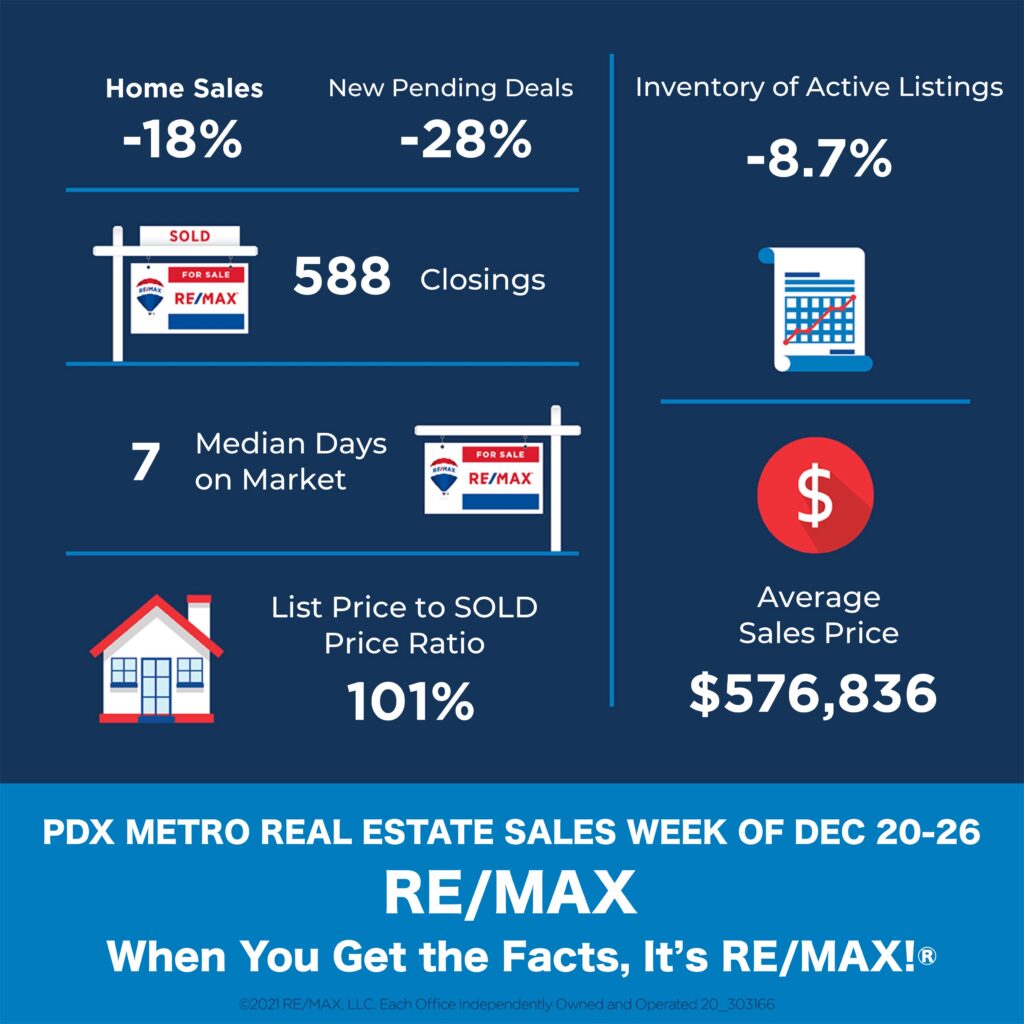

As a buyer in a sellers’ market, sometimes it can feel like you’re stuck between a rock and a hard place. When you’re ready to make an offer on a home, remember these five easy tips to help you rise above the competition.
Knowing your budget and what you can afford is critical to your success as a homebuyer. The best way to understand your numbers is to work with a lender so you can get pre-approved for a loan. As Freddie Mac puts it:
“This pre-approval allows you to look for a home with greater confidence and demonstrates to the seller that you are a serious buyer.”
Showing sellers you’re serious can give you a competitive edge, and it helps you act quickly when you’ve found your perfect home.
Homes are selling quickly in today’s competitive housing market. According to the Existing Home Sales Report from the National Association of Realtors (NAR):
“Eighty-three percent of homes sold in November 2021 were on the market for less than a month.”
When houses are selling this fast, staying on top of the market and moving quickly are key. Your agent can help you put together and submit your best offer as soon as you find the home you want to buy.
No matter what the housing market looks like, rely on a trusted real estate advisor. As Freddie Mac also notes:
“The success of your homebuying journey largely depends on the company you keep. . . . Be sure to select experienced, trusted professionals who will help you make informed decisions and avoid any pitfalls.”
Agents are experts in the local real estate market. They have insight into what’s worked for other buyers in your area and what sellers may be looking for in an offer. It may seem simple, but catering to what a seller needs can help your offer stand out.
According to the latest Realtors Confidence Index from NAR, 40% of offers today are above the list price. In such a competitive market, emotions and prices can run high. Having an agent to help you submit a strong, yet fair offer is critical in these situations. Your agent can help you understand the market value of the home and recent sales trends in the area.
When putting together an offer, your trusted real estate advisor will help you consider which levers you can pull, including contract contingencies (conditions you set that the seller must meet for the purchase to be finalized). Of course, there are certain contingencies you don’t want to give up. Freddie Mac explains:
“Resist the temptation to waive the inspection contingency, especially in a hot market or if the home is being sold ‘as-is’, which means the seller won’t pay for repairs. Without an inspection contingency, you could be stuck with a contract on a house you can’t afford to fix.”
Today’s competitive landscape makes it more important than ever to make a strong offer on a home. Let’s connect to make sure you rise to the top along the way.
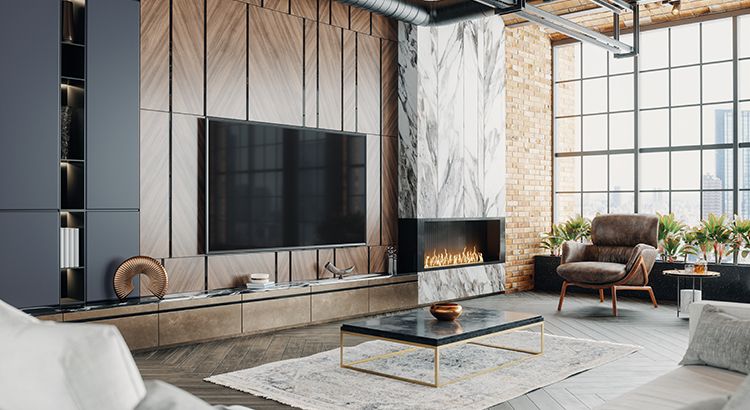
Once you’ve found your dream home and applied for a mortgage, there are some key things to keep in mind before you close. It’s exciting to start thinking about moving in and decorating your new place, but before you make any large purchases, move your money around, or make any major life changes, be sure to consult your lender – someone who’s qualified to explain how your financial decisions may impact your home loan.
Here’s a list of things you shouldn’t do after applying for a mortgage. They’re all important to know – or simply just good reminders – for the process.
Lenders need to source your money, and cash isn’t easily traceable. Before you deposit any amount of cash into your accounts, discuss the proper way to document your transactions with your loan officer.
New debt comes with new monthly obligations. New obligations create new qualifications. People with new debt have higher debt-to-income ratios. Since higher ratios make for riskier loans, qualified borrowers may end up no longer qualifying for their mortgage.
When you co-sign, you’re obligated. With that obligation comes higher debt-to-income ratios as well. Even if you promise you won’t be the one making the payments, your lender will have to count the payments against you.
Remember, lenders need to source and track your assets. That task is much easier when there’s consistency among your accounts. Before you transfer any money, speak with your loan officer.
It doesn’t matter whether it’s a new credit card or a new car. When you have your credit report run by organizations in multiple financial channels (mortgage, credit card, auto, etc.), your FICO® score will be impacted. Lower credit scores can determine your interest rate and possibly even your eligibility for approval.
Many buyers believe having less available credit makes them less risky and more likely to be approved. This isn’t true. A major component of your score is your length and depth of credit history (as opposed to just your payment history) and your total usage of credit as a percentage of available credit. Closing accounts has a negative impact on both of those determinants of your score.
Any blip in income, assets, or credit should be reviewed and executed in a way that ensures your home loan can still be approved. If your job or employment status has changed recently, share that with your lender as well. The best plan is to fully disclose and discuss your intentions with your loan officer before you do anything financial in nature.

Updated: Dec. 24, 2021, 12:08 p.m. | Published: Dec. 24, 2021, 6:56 a.m.
By Janet Eastman | The Oregonian/OregonLive
In Oregon’s hot real estate market, every home for sale gets attention. But in 2021, some residential properties really stood out.
The state’s most viewed online listings on Realtor.com this year ranged from oddball to oceanfront, cut-rate teardowns to over-the-top mansions.
The top 25 most popular Oregon homes include an oceanfront glass house in Cannon Beach, a fixer-upper on a bad foundation in Medford and the perennial favorite, a low-profile dome in Eugene that looks as if space aliens used it to crash-land on Earth.
Here’s the Oregonian/OregonLive’s 2021 edition of the most viewed listings according to web traffic data provided by Realtor.com:
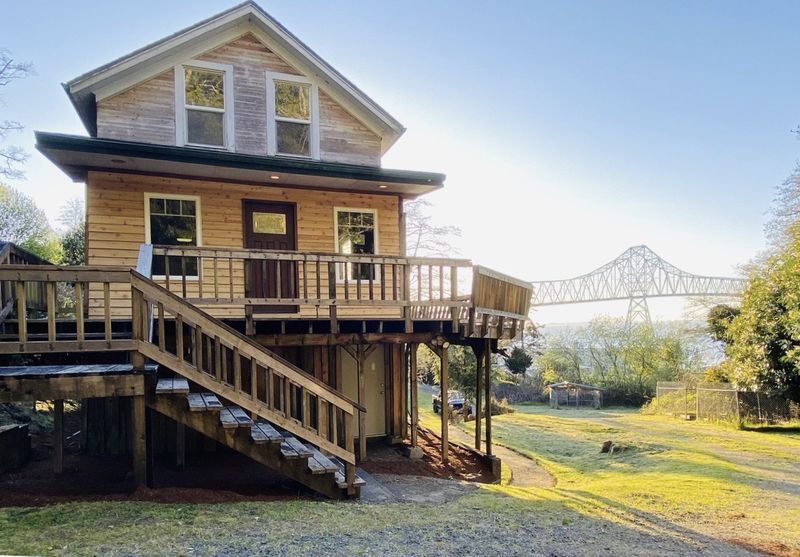
Movie location: 84 W. Duane St. in Astoria sold for $244,000 on Dec. 10, 2021. The fixer-upper with views of the Columbia River was a location in the 1986 movie “Short Circuit.”
The 1889 farmhouse in Clatsop County has two bedrooms, two bathrooms and 1,938square feet of living space. The 7,405-square-foot lot is surrounded by natural privacy, said listing agent Kati Perry of eXp Realty.
“This gem is waiting for its new owners to complete the remodel process and make this beauty their own,” added Perry, who sold the property “as is,” with the seller refusing to make any fixes or improvements.

Oceanfront glass house: 80644 Highway 101 in Cannon Beach sold for $4,995,000 on Sept. 29, 2021.
The contemporary-style house in Clatsop County was built in 2013 at a cost of more than $6 million, according to listing agent Dirk Hmura of Eleete Real Estate.
Bora Architecture & Interiors designed the glass, slab stone and steel structure to connect to its one-acre setting with access to the beach.
Green Gables Design & Restoration built the home with two bedrooms, 2.5 bathrooms and 3,348 square feet of living space.
“Unparalleled quality, design, construction and finishes,” stated Hmura, who worked with Jessica Corcoran of Eleete Real Estate.
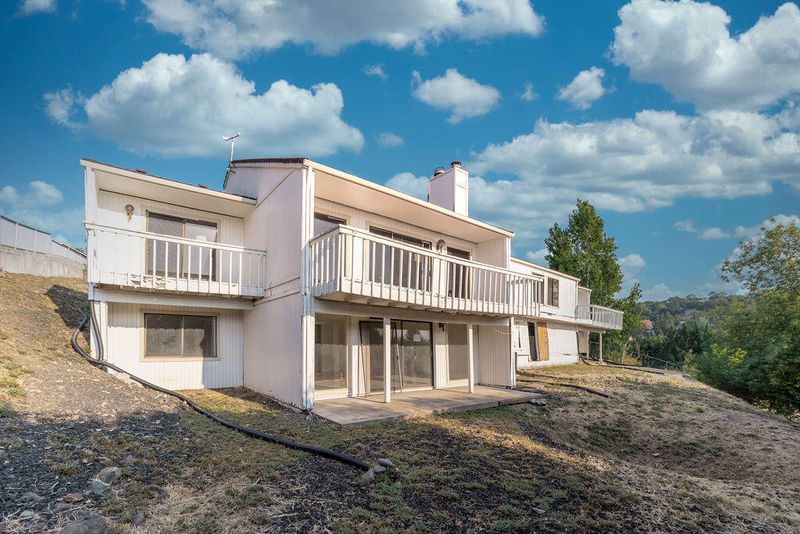
Cash-only fixer-upper: 1383 Highcrest Dr. in Medford is for sale at $217,000.
The contemporary house with a daylight basement, built in 1979 on 0.36 acres in Jackson County, has two living rooms, four bedrooms, 2.5 bathrooms and 3,144 square feet of living space.
“This home is a great fixer with lots of potential,” said listing agent Bradley Farrell of Coldwell Banker Cutting Edge. “This house will not finance due to foundation issues.”

Extraterrestrial-like shelter: 84154 Lorane Highway in Eugene was listed for sale at $350,000 on July 19, 2021.
The insulated, reinforced concrete monolithic dome, built in 2009 on 3.78 acres of sloped and wooded land in Lane County, has one bedroom, one bathroom and 855 square feet of living space.
“Cash offers only. Buyer to do due diligence,” stated the listing.

Potential dividable lot: 3860 W. Prospect Ave. in Hood River sold for $999,994 on Aug. 2, 2021.
The multi-story house, built in 1999 on 0.56 acres with views of Underwood Mountain and Mount Adams, is now for sale by owner at $1.5 million.
A transaction for the Hood River County property in March 2020 listed the sale price at $200,000, according to public records.
“Live large on the Westside in this immaculate, single owner home,” said the seller. “Possibility to divide lot.”
The 5,507-square-foot house has two gas fireplaces, five bedrooms, 3.5 bathrooms, an office and an in-law suite with a separate entrance.
Custom, high-end finishes include hardwood floors, solid wood cabinets and granite counters in a kitchen with stainless-steel appliances.
There is a wraparound deck, hot tub, mature landscaping and an oversized garage.
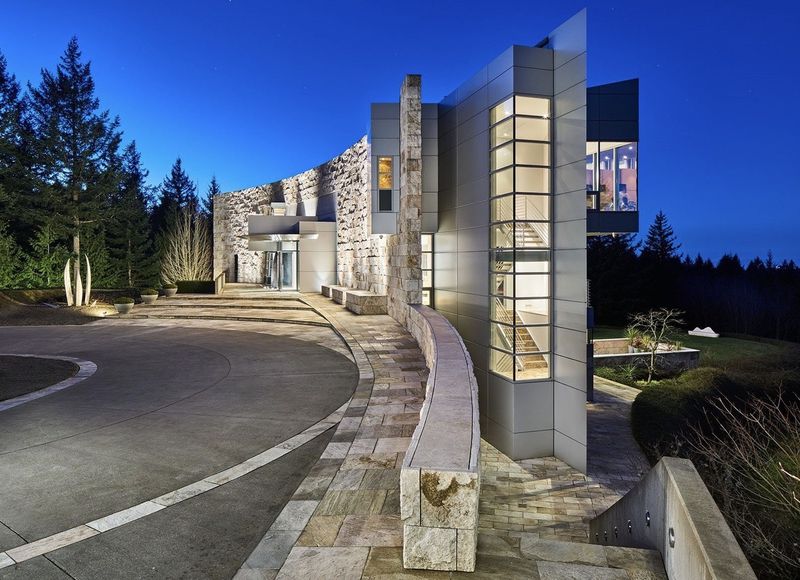
Stone importer’s mansion: 9912 N.W. Wind Ridge Dr. in Portland’s Forest Park neighborhood is for sale at $7,778,500.
The towering modern mansion, built in 2001 on 9.74 gated acres in Multnomah County, was designed by architect Ned Vaivoda, formerly of Thompson Vaivoda & Architects, now TVA Architects.
Three levels of steel and concrete rise from the ground against a ridge. The front of the house has split Travertine walls, reflecting the original owner’s profession as Portland’s leading stone importer.
The back of the dwelling has expansive glass panels. The design offers views of the Cascade mountains while maintaining privacy on the land that borders Forest Park.
The residence has five fireplaces, an indoor pool, sound-proof music room, four bedrooms, 5.5 bathrooms and 11,363 square feet of living space. There is also a guest apartment over the six-car garage.
“A masterpiece of light and design, this architecturally significant Pacific Northwest contemporary house is filled with incredible statements, offering the perfect balance between function and form,” said listing agent Suzann Baricevic Murphy of (W)here, Inc.
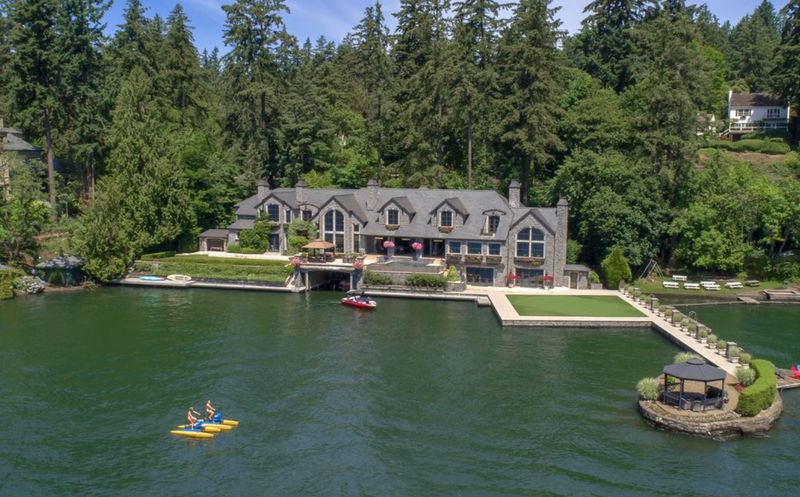
Waterfront Lake Oswego estate: 1500 Northshore Road in Lake Oswego was listed for $11.5 million on Sept. 7, 2021.
The waterfront mansion on the lip of Oswego Lake was built in 2006 on 0.66 acres in Clackamas County.
The three-level mansion has a basalt rock exterior and copper-framed windows. Inside are five bedrooms, six bathrooms, three powder rooms and 13,462 square feet of living space.
Two boat lifts can be accessed from inside the residence.
A covered outdoor entertainment area includes a built-in grill and fireplace. Two waterfalls and an infinity pool are part of the landscaping.
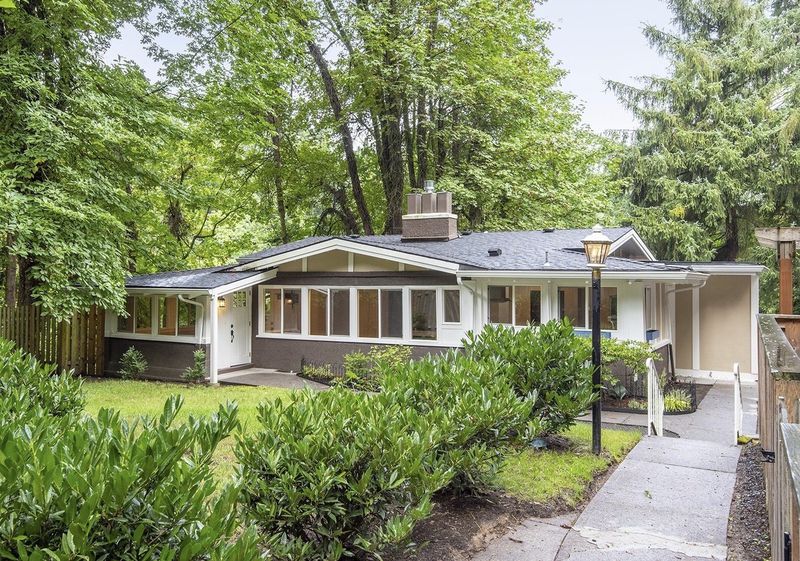
See more amazing homes by clicking here
By StackerPublished 12:21 PM
The economy of real estate is both simple and complex. Like with any other commodity, supply and demand determine cost within the housing market, and right now, home costs are at a record high—an increase of 18% since September 2020. But the factors creating record-low inventory and a surge in buying interest are varied and complicated.
To illustrate just how skewed the market is, we can look at the months of supply metric. This measure tells us how many months it would take for all homes on the market to sell at the current rate. In a balanced real estate market, that number is six. Since 2019, the average months of supply have dipped from about four to fewer than two. The number of single-family homes for sale in the U.S. at the beginning of 2021 was just 870,000, the lowest in roughly 40 years, according to a 2021 study by Harvard University.
Investment firms have found themselves on the favorable side of the pandemic housing crisis, accounting for owning one of out every six homes, and 25% of all apartments purchased in quarter two of 2021. Investors have been able to take advantage of the low interest rates and the demand for rentals, particularly among those who are priced out of the market.
While the pandemic has played a significant role in driving demand for housing, it is only partially to blame for the supply shortage. That problem—which is actually an underproduction problem—began two decades before the world had ever heard of COVID-19.
According to the National Association of Realtors (NAR), the U.S. built 276,000 fewer homes per year, on average, between 2001 and 2020, compared to the 30 years prior. Had the pace of production not dropped over the last 20 years, there would be 5.5 million more homes in existence. The NAR estimates the U.S. would need to construct more than 2 million new units per year over the next decade to close the gap. Under the best circumstances, this pace would be difficult to achieve. Under the actual circumstances—where supply chain disruptions are impacting 88% of construction projects and nearly 90% of construction firms cannot find enough skilled craftsmen to meet demand—it feels like a Sisyphean task.
The real estate market is nuanced from state to state, and while many national trends hold true at a more localized level, it is important to understand the context of your individual state.
To analyze every state’s real estate market, rent-to-own platform ZeroDown compiled current and historical data from the U.S. Census Bureau and the Department of Housing and Urban Development. The data will cover homeownership rates, vacancies, foreclosures, mortgages, new housing construction, and manufacturing, as well as housing characteristics such as the median age, square feet, and the number of rooms for homes in your state.
Oregon by the numbers
– Homeownership rate: 67.6%
– Homeowner vacancy rate: 0.8%
– Rental vacancy rate: 5.8%
– Occupied housing units: 1,649,352
— Owner-occupied housing units: 1,037,125, renter-occupied housing units: 612,227
— Year homes were built: 2014 or later (4.3%), 2010 to 2013 (2.3%), 2000 to 2009 (14.0%), 1980 to 1999 (27.7%), 1960 to 1979 (27.7%), 1940 to 1959 (12.9%), 1939 or earlier (11.0%)
— Number of bedrooms: no bedroom (3.6%), 1 bedroom (9.7%), 2 or 3 bedrooms (68.0%), 4 or more bedrooms (18.7%)
— Type of heating used: utility gas (36.9%), bottled, tank, or LP gas (1.8%), electricity (52.4%), fuel oil, kerosene, etc. (1.6%), coal or coke (0.0%), all other fuels (6.9%), no fuel used (0.4%)
– New building permits: 18,665 ($4,067,001 value)
– Manufactured homes shipped to state: 1,089 (average sales price: $106,700)
The COVID-19 pandemic created a world where some people found the financial flexibility to purchase a home—and an incentive to do so quickly. Remote work, shutdowns, and record-low mortgage rates pushed people—particularly those under 35—who may have otherwise delayed home buying to suddenly seek out more space for themselves, their families, and a yard for their pandemic puppies in cheaper neighborhoods away from employment hubs and large metros.
For others, the pandemic created a new reality of financial insecurity, delinquent mortgage or rent payments, risk of eviction, and being priced out of previously affordable neighborhoods. Nearly a quarter of households earning less than $25,000 annually were behind on mortgage payments as of early 2021. In that same time frame, one-fifth of all renters in the U.S. were behind on their monthly payments. Within these overall figures, the burden of the economic fallout due to the pandemic falls disproportionately on low-income and minority families.
Continue reading to learn how the real estate market is faring for your state’s neighbors.
California by the numbers
– Homeownership rate: 54.4%
– Homeowner vacancy rate: 0.6%
– Rental vacancy rate: 4.0%
– Occupied housing units: 13,157,873
— Owner-occupied housing units: 7,218,742, renter-occupied housing units: 5,939,131
— Year homes were built: 2014 or later (2.9%), 2010 to 2013 (1.7%), 2000 to 2009 (10.8%), 1980 to 1999 (25.7%), 1960 to 1979 (30.8%), 1940 to 1959 (19.2%), 1939 or earlier (8.9%)
— Number of bedrooms: no bedroom (4.2%), 1 bedroom (13.3%), 2 or 3 bedrooms (60.4%), 4 or more bedrooms (22.2%)
— Type of heating used: utility gas (64.4%), bottled, tank, or LP gas (3.2%), electricity (26.6%), fuel oil, kerosene, etc. (0.2%), coal or coke (0.0%), all other fuels (2.5%), no fuel used (3.1%)
– New building permits: 106,075 ($25,423,120 value)
– Manufactured homes shipped to state: 2,243 (average sales price: $118,700)
Idaho by the numbers
– Homeownership rate: 71.4%
– Homeowner vacancy rate: 1.0%
– Rental vacancy rate: 3.4%
– Occupied housing units: 655,859
— Owner-occupied housing units: 469,387, renter-occupied housing units: 186,472
— Year homes were built: 2014 or later (8.0%), 2010 to 2013 (3.3%), 2000 to 2009 (19.8%), 1980 to 1999 (27.8%), 1960 to 1979 (23.3%), 1940 to 1959 (9.4%), 1939 or earlier (8.4%)
— Number of bedrooms: no bedroom (1.5%), 1 bedroom (5.7%), 2 or 3 bedrooms (62.9%), 4 or more bedrooms (29.9%)
— Type of heating used: utility gas (50.9%), bottled, tank, or LP gas (5.2%), electricity (34.4%), fuel oil, kerosene, etc. (1.5%), coal or coke (0.0%), all other fuels (7.6%), no fuel used (0.3%)
– New building permits: 19,130 ($3,948,590 value)
– Manufactured homes shipped to state: 376 (average sales price: $108,900)

If you’re thinking of buying a home, you’re probably wondering what you need to save for your down payment. Is it 20% of the purchase price, or could you put down less? While there are lower down payment programs available that allow qualified buyers to put down as little as 3.5%, it’s important to understand the many perks that come with a 20% down payment.
Here are four reasons why putting 20% down may be a great option if it works within your budget.
A 20% down payment vs. a 3-5% down payment shows your lender you’re more financially stable and not a large credit risk. The more confident your lender is in your credit score and your ability to pay your loan, the lower the mortgage interest rate they’ll likely be willing to give you.
The larger your down payment, the smaller your loan amount will be for your mortgage. If you’re able to pay 20% of the cost of your new home at the start of the transaction, you’ll only pay interest on the remaining 80%. If you put down 5%, the additional 15% will be added to your loan and will accrue interest over time. This will end up costing you more over the lifetime of your home loan.
In a market where many buyers are competing for the same home, sellers often like to see offers come in with 20% or larger down payments. The seller gains the same confidence as the lender in this scenario. You are seen as a stronger buyer with financing that’s more likely to be approved. Therefore, the deal will be more likely to go through.
What is PMI? According to Freddie Mac:
“For homeowners who put less than 20% down, Private Mortgage Insurance or PMI is an added insurance policy for homeowners that protects the lender if you are unable to pay your mortgage.
It is not the same thing as homeowner’s insurance. It’s a monthly fee, rolled into your mortgage payment, that’s required if you make a down payment less than 20%. . . . Once you’ve built equity of 20% in your home, you can cancel your PMI and remove that expense from your monthly payment.”
As mentioned earlier, if you put down less than 20% when buying a home, your lender will see your loan as having more risk. PMI helps them recover their investment in you if you’re unable to pay your loan. This insurance isn’t required if you’re able to put down 20% or more.
Many times, home sellers looking to move up to a larger or more expensive home are able to take the equity they earn from the sale of their house to put 20% down on their next home. With the equity homeowners have today, it creates a great opportunity to put those savings toward a larger down payment on a new home.
If you’re looking to buy a home, consider the benefits of 20% down versus a smaller down payment option. Let’s connect so you have expert advice to help make your homeownership goals a reality.